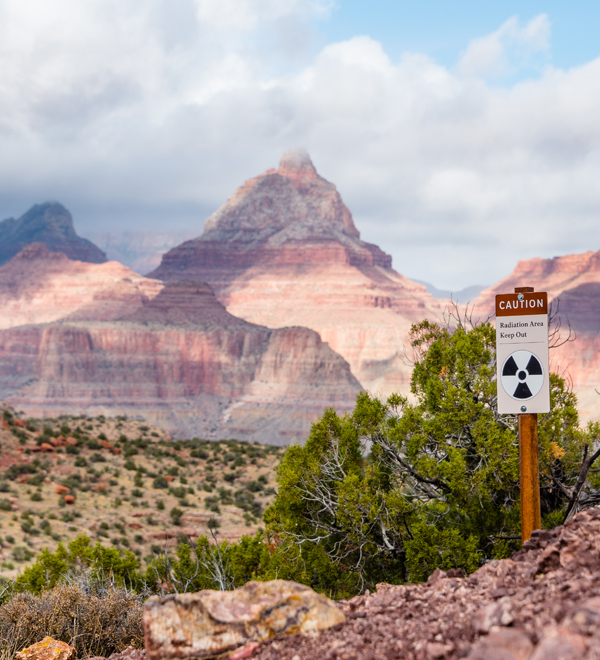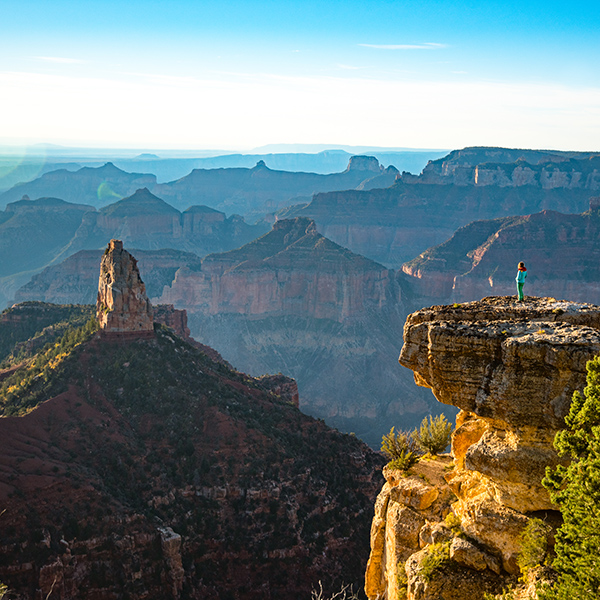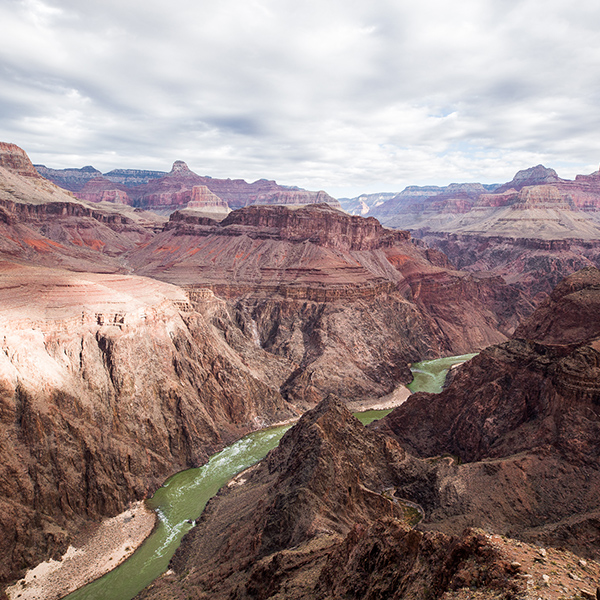This is a backpacking route and requires a Grand Canyon National Park backcountry permit. Learn more ›
Hike down the Tanner Trail to the Colorado River, and look for a rock-lined path that cuts across the beach. Follow it downriver for about a half mile, where a cliff at the river’s edge forces you up on a bench. Continue downstream, traversing across the red Supergroup slopes and crossing a few small gullies. Around three miles, you reach Cardenas Creek. Though usually dry, you can walk down the cobbled creekbed to access water at the Colorado River.
Note: It’s wise to top off your water here. The next water is an exposed, hot, and shadeless 6 miles away at the mouth of Escalante Creek.
Cardenas Creek to Escalante Creek
From Cardenas Creek, you’ve got a steady 3.5 mile climb ahead of you. The trail winds up to an archaeological site called Hilltop Ruin, then turns south, working its way to the back of an unnamed drainage. From there, hike west across steep, exposed slopes to the top of a ridge — a perfect snack spot with panoramic views of the Furnace Flats.
After crossing the ridge, you descend into Escalante Creek (also dry). The trail crosses the main drainage and continues dropping into its south arm, where you bypass a pouroff and follow the creekbed to the banks of the Colorado River.
Escalante Creek to Seventyfive Mile Creek
Sheer cliffs at river level again force you to climb up a series of ledges. Hike down river until you reach Seventyfive Mile Canyon. Turn south, and follow the rim for about a half mile until you can safely drop into the creekbed. Seventyfive Mile Canyon is spectacular — savor the walk through its narrow quartzite walls all the way to the Colorado River.
Seventyfive Mile Creek to Hance Rapid
From the beach at Seventyfive Mile Canyon, a cairned high route allows you to traverse down canyon. The pattern should feel familiar by now, as you momentarily drop down to river level at the mouth of Papago Creek only to climb up the cliffs again.
Note: At the Papago beach, cairns mark several routes up a series of sheer ledges. There are good hand and foot holds, but there is significant exposure for about 35 feet. Depending on your comfort level, a rope might be handy for hauling packs.
The grade eases, and you find yourself on a well-trodden trail about 300 feet above the river. But the easy walking doesn’t last long. When you reach a rock-filled gully, carefully pick your way down the steep boulder slide, being mindful of where you are in relation to others in your group.
The trail bottoms out on the brushy banks of the Colorado River, and it’s an easy half-mile walk to the mouth of Red Canyon and Hance Rapid.
From there, you can finish your trip by hiking out the New Hance Trail, or continue west on the Tonto Trail.
Since the Escalante Route starts 5,000 feet below the rim, driving to the start of the trail is not an option. You must get there by foot. See the Tanner and New Hance trails for more information.
This is a multi-day backpacking trip in Grand Canyon National Park, so you’ll need a permit to camp below the rim. Need help figuring out permits? We can help ›
Suggested itinerary:
Join the Grand Canyon Trust today to receive your adventure kit:

Water is life in the Grand Canyon, but uranium mines located on public land mere miles from the North and South Rims threaten to contaminate the Grand Canyon's waters. The Park Service warns hikers not to drink out of several creeks along the Tonto Trail because of contamination from a uranium mine that closed in 1969.

The future of the Grand Canyon is in your hands. Will you donate today to help protect it forever?

Find out about opportunities to speak up for the Grand Canyon when it needs you most.
Don't let a little snow keep you from visiting the Grand Canyon. Here's everything you need to know for a winter trip to the big ditch.
Read MoreFind out where to camp beneath the stars in and around Grand Canyon National Park.
Read MoreSettle in to see one of the most awe-inspiring landscapes in the world transform under an expansive, colorful sky.
Read More